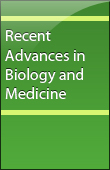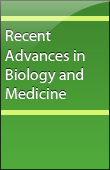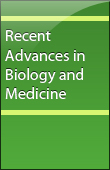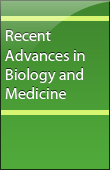


Agriculture and Allied Sciences
Dec 30, 2020
Hymenopteran Insect Pollinators.
Studies were undertaken on hymenopterans insect pollinators, visiting the crops of agricultural and horticultural importance in the Baramulla district of Jammu & Kashmir. A total of 12 species of insects belonging to order Hymenoptera comprising of 5 families i.e., Apidae (Apis cerana indica, Apis mellifera, Apis dorsata, Bombus haemorrhoidalis, Bombus lepidus, Ceratina hieroglyphica); Vaspidae (Vespa velutina, Vespa affinis, Polister wetti.); Formicidae (Camponotus sp.); Halictidae (Halictus sp.) and Xylocopidae (Xylocopa violacea) are recorded. The diagnostic features of these pollinating species are also incorporated.

Agriculture and Allied Sciences
Dec 30, 2020
Survival Of Adults And Development Of Eggs Of Estigmena chinensis Hope. (Coleoptera: Chrysomelidae).
Estigmena chinensis Hope (Coleoptera: Chrysomelidae) has been recorded damaging green standing bamboos in natural stands and plantations. The borer damage is frequent in solid bamboos of small dimensions and solid parts or thick walls of large hollow bamboos. The effect of temperature and relative humidity on the development of eggs and survival of adults was studied in the laboratory. Results revealed that the population of bamboo borer E. chinensis is greatly affected by the variations in temperature and relative humidity. At 30°C temperature and 70% relative humidity mean longevity of males and females was 11.5±0.23 and 13.5±0.20 days respectively. The study also concluded that the development of eggs was most favorable at 30°C temperature and 70% relative humidity.

Agriculture and Allied Sciences
Dec 30, 2020
Growth And Yield Of Sweet Corn (Zea mays saccharata L.)
A field experiment was conducted during the rabi season of 2013 at Crop Research Farm, Department of Agronomy, Naini Agriculture Institute, SHUATS, Prayagraj to evaluate the response of row orientation, sowing time, and levels of zinc on growth and economics of sweet corn (Zea mays saccharata). The experiment consisted of twelve treatments comprising of three-row orientations (control, East–West and North-South orientation of sowing), two dates of sowing (22nd October and 06th November) and two zinc levels (20 kg/ha and 30 kg/ha), which were laid out in Randomized Block Design and replicated thrice. The experimental findings reveal the highest plant height, number of leaves/plant, dry weight accumulation, and Crop Growth rate under the treatment T11 (East–West orientation of sowing on 22nd October and applied with 30 kg/ha of Zn/ha). Similarly, the highest number of cobs/plant, cob weight (g), number of grains/cob, and stover yield (t/ha) were recorded under the same treatment T11.

Agriculture and Allied Sciences
Dec 30, 2020
Consumption Pattern Of Fuelwood And Fodder.
Fuelwood and fodder consumption pattern was studied in natural resource-based three villages of Western Nayar Watershed at Pauri district of Uttarakhand, India. It was observed that Fuelwood collection in the villages started during October and finished by April end. Extensive Fuelwood collection and storage were in February, March, and April. The occasional collection was also found around the year except during rains. It was assumed that the inhabitants on average collect Fuelwood for about 180 days/year. The total green fodder consumption in Khaira village during summer was found 27.076 ± 5.873 kg/day/household from the forest, 6.892± 2.069 kg/day/household from the agriculture field. Total dry fodder consumption was found maximum for Khaira village during summer was 9.620 ± 2.634 kg/day/household from the forest and 7.046 ± 2.642 kg/day/household from the agriculture field.

Agriculture and Allied Sciences
Dec 30, 2020
Alternative Rice Establishment Method.
Water and labor for agriculture are becoming increasingly scarce resources in many rice production areas. The share of water in agriculture is declining because of its increased demand in other non-agriculture sectors. Groundwater is being depleted at an alarming rate, especially in South Asia and the same is the case in India mainly because of its heavy use for rice production. Similarly, labor availability for agriculture is declining because of increased demand in non-agriculture sectors associated with rapid economic growth in many Asian countries. These factors provide incentives for farmers to shift to direct seeding, which requires less water and labor. Direct seeded rice production system gives a similar result with respect to growth and yield as found in transplanted puddled rice. However, due to the lower cost of cultivation B:C ratio is higher in direct seeded rice as compared to transplanted rice.

Agriculture and Allied Sciences
Dec 30, 2020
Nanosensors
Agriculture provides food for humans in a straight line and in a roundabout way. As planet inhabitants are rising; it’s obligatory to use contemporary technology such as biological tools and nanotechnology in agriculture sciences. In the present study, we have explored the utility of nanotechnology in crop growing sciences.

10.18639/RABM.2020.1234556
Cardiovascular Disease
Dec 30, 2020
Electrical Injuries.
Cardiac manifestations are the effects of an electrical injury that could be life-threatening. Although it is rare, arrhythmias and myocardial tissue injuries are the two major cardiac complications that can happen after electrical injury. Lack of recommendation and review makes it confusing to physicians in managing electrical injury patients with cardiovascular complications. This article provides an overview of electrical injuries, the cardiac manifestations that can occur, and management of electrical injuries that focus on cardiac effects.

10.18639/RABM.2020.1233416
Cancer and Oncology
Dec 30, 2020
Pancreatic cancer.
Pancreatic ductal adenocarcinoma is a fatal type of cancer with an increasing incidence rate in North America. The only curative procedure of this disease is the Whipple procedure, which is restricted only to those that received an early diagnosis. The remainder of the patients is informed of a dismal prognosis and undergo palliative care through systemic chemotherapy. Multiple modalities are involved in the staging and diagnosis of this disease. However, there seems to be a controversy regarding a gold standard or whether a gold standard exists. Additionally, various emerging techniques warrant heightened sensitivity and specificity in their designated modalities. Transabdominal ultrasound that is most commonly used as the first line of imaging for patients with epigastric pain is found to be virtually insensitive to neoplasms that have a size of 2 cm or less, limiting its application. However, sonographers could resort to contrasts and elastography to increase the conspicuity of the neoplasms. Moreover, endoscopic ultrasound has shown to be a promising imaging modality with an unprecedented degree of sensitivity to tumors with a diameter of less than 1.5 cm. The sensitivity and specificity values of MDCT, MRI, and PET were found to be comparable. The main conclusions consist of the fact that EUS is a highly sensitive test that should be accompanied by MRI, MDCT, PET, or TUS to increase its specificity. Lastly, empathetic communication is vital not only for patient comfort but also to improve the quality of the imaging assessment.

10.18639/RABM.2020.9800005
Microbiology and Immunology
Nov 16, 2020
Post-Operative Wound Infections and Antibiotic Susceptibility Patterns.
Wound infection is considered one of the most common nosocomial infections all over the world. So, the aims and objectives of this study are to identify the pathogenic agents of wound infection infecting hospital admitted patients and commonly used antimicrobial susceptibility profiles. A total of 91 samples were collected for the study. The cultural analysis was done by phenotypic examination as well as Gram staining and biochemical examination to identify the isolates. Finally, antibiotic sensitivity was tested against conventionally used antibiotics. All the samples were aseptically collected from different hospitals in the Tangail area and tests were done in the Lab Zone and Hormone Center, Tangail, Bangladesh between January 2019 and June 2019. 84(92.3%) of the total samples yielded a positive culture and only 7(7.7%) samples were negative growth. Gram-Negative bacteria 64(76.2%) showed more prevalence than Gram-Positive bacteria 20(23.8%). The most predominant isolates were Pseudomonas species 54(64.3%) in this study though Staphylococcus species 20(23.8%), Proteus species 7(8.3%), and Klebsiella species 3(3.6%) were also found. Like most of the previous reports, Pseudomonas species was predominant; this is also corroborated in this study. However, the antimicrobial result of the detected organisms differed compared to studies that were previously done. The isolates were found to be resistant to most common oral antibiotics used, such as Cefuroxime, Colistin, Cephradine, Ciprofloxacin, Ceftazidime, and Ceftriaxone which was alarming. The pathogens showed remarkable sensitivity against Gentamicin and Meropenem. This research needs further work for validating more reliability. This study is designed to provide information on pathogens which are isolated from wound suspected of wound infection hospital admitted patients in Bangladesh and their antibiotic susceptibility profile against locally available antibiotics which are frequently prescribed by the doctors to find a suitable antibiotic for wound infections.

10.18639/RABM.2020.9800004
Original Research Article
Oct 30, 2020
Processes and Practices of Medical Clinics in State Hospitals.
The study aimed to improve the service delivery of medical clinic in Base Hospital Dambadeniya in Sri Lanka by applying lean principles. Focus group discussions with patients and staff, key informant interviews with medical superintendent and consultant physician, survey of patient satisfaction using self-administered questionnaire, and process mapping were carried out to gather data at pre- and post-intervention stages. Long waits, congestion at clinic, and undue queuing at pharmacy had led to poor patient satisfaction and raised concerns in the staff. Application of lean management reduced waits and total requirement of staff and improved patient satisfaction in selected attributes.

10.18639/RABM.2020.1222516
Diabetes
Oct 28, 2020
Diabetes Mellitus
Visfatin is an adipocytokine that has been thought to play a role in the pathogenesis of insulin resistance. Clarifying the role of Visfatin along with its correlation to insulin resistance in Diabetes and Metabolic Syndrome (MS) patients would enhance our knowledge of this novel biomarker. It was a clinic-based cross-sectional study. Serum levels of Visfatin assessed randomly in 118 patients having diabetes, Pre- diabetes, or metabolic syndrome, attending OPD in our institute. Visfatin levels measured along with BMI (Body Mass Index), Blood Pressure (BP), Lipids, Glucose, Insulin, Hs-CRP (High Sensitivity C Reactive Peptide) levels, Homeostatic model assessment is a method for insulin resistance (HOMA-IR) indexes. One-way ANOVA and linear regression analysis were carried out using SPSS 23. Average Serum Visfatin (SV) levels were significantly different in MS (n=34, 9.50±8.22), Diabetic (n=43, 12.04±7.6) and Pre-Diabetic (n=41, 9.07±8.6) groups. SV shows a significant association with fasting blood sugar (p=0.009) and BMI (p=0.038) only in MS patients. Significant correlation not found between Visfatin and insulin resistance (p=0.173) in either of the 3 groups. In the present study, SV levels were not correlated with insulin resistance in metabolic, diabetic, and pre-diabetic patients but SV showed a significant association with fasting blood sugar and BMI in MS patients.

10.18639/RABM.2020.9800003
Microbiology and Immunology
Sep 29, 2020
Citrus Essential Oils’ Antibacterial Effects
Seven citrus essential oils (CEOs) and four terpenes were tested against eleven bacterial pathogenic strains isolated from food to evaluate the antimicrobial effects. All CEOs presented antibacterial activities. In particular, CEOs were very active against Staphylococcus Epidermidis, which was found to be the most sensitive toward all oils, showing high growth inhibition.

10.18639/RABM.2020.1135536
Original Research Article
Aug 24, 2020
Pre-Hospital Ambulance Service.
Ischemic heart disease is the leading cause of mortality that raised demand for pre-hospital emergency care in Sri Lanka. Understanding the performance of Sri Lanka's 1990 Suwa Seriya ambulance service is essential to improve its quality and to reduce morbidity and mortality associated with the disease. This study aims to describe socio-demographic characteristics and evaluate the clinical assessment and management process of patients presenting with acute chest pain of cardiac in origin. A descriptive study was conducted in Gampaha District of the Western Province of Sri Lanka. A total of 154 records of patients with acute chest pain who rang the 1990 call centre over a 3-month period were selected. Composite values for treatment and examinations as a percentage were plotted on run charts to assess the performance and its variations over the study period. About 47.4% of the study group were in 35–65 age group, 53.2% were males, and 81.8% had a typical presentation. The median for composite value for examination as a percentage was 89.5%, indicating substantial control and alignment with the reference package with normal cause variation. The median composite value for treatment as a percentage was 9.96%, a low value with normal cause variation. A good control of the processes of clinical examination and treatment is apparent. A higher median for composite value for examination as a percentage attributed to the formal training process of the ambulance staff. Although a low median was obtained for the composite value for treatment as a percentage, it was stable and pointed room for improvement.

10.18639/RABM.2020.1128039
Original Research Article
Aug 17, 2020
Integration of Patient Care Operations with Emergency Ambulance Service.
Integration in operations between 1990 Suwa Seriya ambulance service and A&E services of hospitals in Sri Lanka was assessed qualitatively using the Mini Focus Group Discussion (Mini-FGD) technique and applying a Likert scale survey. Agreed group-perceived satisfaction of the A&E staff was recorded based on identified thematic areas. The technique of patient handling, reliability of vital sign recording, providing random blood sugar reading, and professional relationship with hospital staff of Suwa Seriya emergency ambulance service were the thematic areas that recorded positive agreed group-perceived satisfaction indicating a potential to broaden integration process with the A&E operations of the country. Quality of providing clinical history, administration of medication, and awareness of A&E operations of emergency ambulance service indicated least agreed group-perceived satisfaction. Moreover, providing clinical notes and investigation records such as electrocardiogram, sharing feedback about the patient, prehospital triaging, and pre-alert system were found to be non-operational. The health-care policymakers of Sri Lanka should exploit the positives and explore the negatives of the A&E staff perception on 1990 Suwa Seriya ambulance service, focusing on widening the integration process.

10.18639/RABM.2020.1121418
Microbiology and Immunology
Jul 30, 2020
Antimicrobial Activity Of Some Plant Leaves’ Extracts Against Some Selected Bacterial Strains.
There is an alternative approach to control the infectious diseases caused by pathogenic bacteria, especially resistant bacteria. This study was designed to determine the antimicrobial activities of Kalanchoe blossfeldiana and Paederia foetida plants’ extracts against some selected bacterial strains. K. blossfeldiana and P. foetida leaves were extracted in methanol. In vitro antibacterial activities were evaluated against 12 bacterial strains including, Staphylococcus gallinarum, Staphylococcus sciuri, Streptococcus constellatus, Streptococcus iniae, Aeromonas diversa, Xanthomonas campestris, Xanthomonas axonopodis, Siccibacter colletis, Edwardsiella anguillarum, Aeromonas cavernicola, Enterobacter xiangfangensis, and Vibrio rotiferianus. Antimicrobial activities were screened by disk diffusion method. In addition, minimum inhibitory concentration (MIC) was determined using broth dilution method. Data were analyzed using SPSS 16 statistical software. In antimicrobial screening, both the plant extracts showed highest inhibition (15 mm zone diameter) against S. gallinarum at the concentration of 20 μg/disk and 15 μg/disk, respectively. In the MIC test, both K. blossfeldiana and P. foetida leaves’ extracts showed the lowest MIC value of 100 μg/ml on V. rotiferianus and S. iniae, respectively. From the above findings, it can be concluded that the extracts may be used as natural antibacterial agent for the treatment of some bacterial diseases. Further investigations on the chemical composition and possible isolation of active ingredients are warranted.